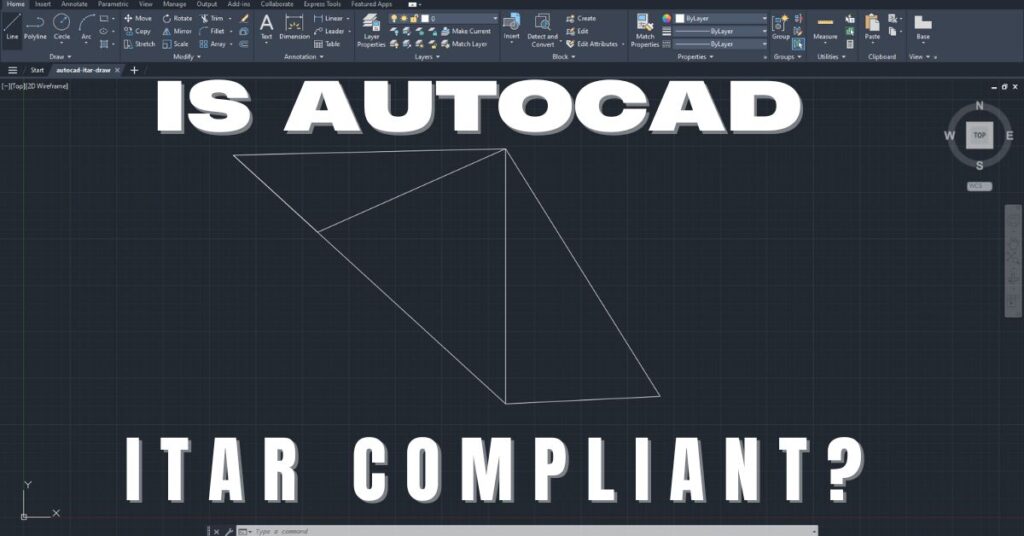The Ultimate Beginner’s Guide to NIST SP 800-171 Compliance
Overview of NIST
In 1901, Congress established the National Institute of Standards and Technology (NIST) as the National Bureau of Standards (NBS). NIST SP 800-171 became one of its focuses, and it began by standardizing weights and measures. As the U.S. industry grew, NIST expanded into areas like electronics, computer science, and materials science to support innovation.
In 1988, the agency was renamed the National Institute of Standards and Technology (NIST) to reflect its broader mission. Today, NIST is a non-regulatory agency of the U.S. Department of Commerce that plays a vital role in promoting innovation and competitiveness in the U.S. economy. It achieves this mission by advancing measurement science, standards, and technology across a wide range of fields, including cybersecurity, engineering, manufacturing, and more.
NIST has been instrumental in shaping the cybersecurity landscape through its work developing cybersecurity frameworks and guidelines, such as the NIST Cybersecurity Framework and the suite of Special Publications, including SP 800-171. These resources have become widely adopted across the public and private sectors and have helped to establish NIST as a leader in cybersecurity standards development.
Understanding NIST SP 800-171
NIST SP 800-171 is a set of cybersecurity rules made by the National Institute of Standards and Technology (NIST) to protect sensitive Federal information. It helps organizations keep data safe from unauthorized access or changes.
Why NIST SP 800-171 Matters
NIST SP 800-171 is crucial for organizations working with sensitive Federal information. It helps prevent unauthorized access and keeps both the government and contractors safe. Following these rules gives businesses an advantage in the Federal market and shows they care about cybersecurity. NIST SP 800-171 also gets updated as technology changes, so organizations always have the newest guidelines.
Who Needs to Follow NIST SP 800-171?
Contractors and subcontractors of the Federal government must follow NIST SP 800-171. It makes sure they have strong cybersecurity measures to protect government information. These rules help keep important information safe and available to people who need it.
What’s in NIST SP 800-171?
NIST SP 800-171 has 14 control families and 110 controls that organizations must follow. They cover many security measures, like access control, incident response, and risk assessment. These controls help protect sensitive information.
Overview of NIST SP 800-171 14 Control Families
Access Control
The Access Control family of controls includes measures to ensure that only authorized personnel can access sensitive information. This includes measures such as user identification and authentication, access controls for privileged users, and access controls for network devices.
There are 22 requirements in the Access Control family, including:
- Limiting system access to authorized users, processes, or devices only
- Using unique user identifiers and authenticators to verify user identities
- Enforcing password complexity and length requirements
- Implementing session lock and termination procedures
- Limiting unsuccessful login attempts
- Implementing access control for network devices
The Access Control family is important because it ensures that only authorized individuals can access sensitive information and systems, which helps prevent unauthorized access and data breaches.
Awareness and Training
The Awareness and Training family of controls includes measures to ensure that all personnel are aware of their roles and responsibilities regarding cybersecurity. This includes regular cybersecurity training for all personnel, as well as security awareness campaigns to educate personnel about cybersecurity threats and best practices.
There are 4 requirements in the Awareness and Training family, including:
- Providing initial and annual cybersecurity awareness training to all personnel
- Incorporating cybersecurity awareness into existing training programs
- Regularly reminding personnel of their cybersecurity responsibilities
- Ensuring that personnel acknowledge receipt and understanding of cybersecurity policies
The Awareness and Training family is important because it helps ensure that all individuals who have access to sensitive information and systems are aware of security best practices and procedures. This reduces the risk of human error and helps prevent security incidents.
Audit and Accountability
The Audit and Accountability family of controls includes measures to ensure that all access to sensitive information is logged and auditable. This includes requirements for audit logs, audit trails, and the ability to trace actions to individual users.
There are 13 requirements in the Audit and Accountability family, including:
- Creating and maintaining audit logs for all system and network activity
- Protecting audit logs from unauthorized access or modification
- Creating audit trails that will be traced to individual users
- Reviewing and analyzing audit logs regularly
- Reporting any suspicious activity to appropriate personnel
The Audit and Accountability family is important because it ensures that all system activity is monitored and audited, which helps detect and respond to security incidents in a timely manner.
Configuration Management
The Configuration Management family of controls includes measures to ensure that all hardware and software configurations are managed and tracked to prevent unauthorized changes. This includes requirements for hardware and software inventory, configuration baselines, and change management processes.
There are 9 requirements in the Configuration Management family, including:
- Developing and maintaining an inventory of all hardware and software assets
- Implementing a formal configuration management process
- Tracking and controlling changes to hardware and software
- Using secure baseline configurations for hardware and software
- Testing and validating changes before implementation
The Configuration Management family is important because it ensures that all system configurations are properly documented, managed, and controlled, which helps prevent unauthorized changes and ensures system stability.
Identification and Authentication
The Identification and Authentication family of controls includes measures to ensure that users are properly identified and authenticated before they can access sensitive information. This includes requirements for multi-factor authentication, password complexity, and password storage and protection.
There are 11 requirements in the Identification and Authentication family, including:
- Verifying the identity of all users before allowing access to systems or information
- Using multi-factor authentication for network access and other high-risk activities
- Protecting authentication credentials from unauthorized disclosure or modification
- Enforcing password complexity and length requirements
- Changing default passwords before deployment
The Identification and Authentication family is important because it ensures that individuals who access sensitive information and systems are properly identified and authenticated, which helps prevent unauthorized access and data breaches.
Incident Response
The Incident Response family of controls includes measures to ensure that organizations are prepared to respond to cybersecurity incidents. This includes requirements for incident response planning, incident detection and analysis, and incident containment and eradication.
There are 7 requirements in the Incident Response family, including:
- Developing and maintaining an incident response plan
- Establishing procedures for detecting and reporting incidents
- Establishing procedures for containing and eradicating incidents
- Establishing procedures for conducting forensic analysis
- Testing the incident response plan regularly
The Incident Response family is important because it ensures that there are plans and procedures in place to detect, respond to, and recover from security incidents. This helps minimize the impact of security incidents and helps ensure the continuity of operations.
Maintenance
The Maintenance family of controls includes measures to ensure that all hardware and software is maintained in a secure and up-to-date manner. This includes requirements for patch management, vulnerability scanning, and system and component inventory.
There are 9 requirements in the Maintenance family, including:
- Developing and maintaining an inventory of all hardware and software assets
- Installing security-relevant software updates and patches in a timely manner
- Scanning for and remediating vulnerabilities in a timely manner
- Using only supported software and hardware
- Disabling or removing unnecessary hardware and software
The Maintenance family is important because it ensures that all systems and equipment are properly maintained and updated, which helps prevent vulnerabilities and ensures system reliability.
Media Protection
The Media Protection family of controls includes measures to ensure that all sensitive information stored on physical media is protected from unauthorized access. This includes requirements for media sanitization, media storage, and media transport.
There are 8 requirements in the Media Protection family, including:
- Implement procedures for sanitizing or destroying media before disposal or reuse
- Protect media during transport
- Store media in secure locations with limited access
- Ensure that all media is labeled and tracked
- Verify the authenticity and integrity of all media received from external sources
The Media Protection family is important because it ensures that all media containing sensitive information is properly controlled and protected, which helps prevent unauthorized access and data breaches.
Personnel Security
The Personnel Security family of controls includes measures to ensure that all personnel with access to sensitive information are properly vetted and trained. This includes requirements for background checks, security clearances, and termination procedures.
There are 7 requirements in the Personnel Security family, including:
- Screen all personnel before granting access to systems or information
- Provide security awareness training to all personnel
- Ensure that personnel with access to sensitive information have the appropriate security clearances
- Ensure that personnel are aware of their security responsibilities
- Establish procedures for terminating access when personnel leave the organization
The Personnel Security family is important because it ensures that individuals who have access to sensitive information and systems are properly vetted and screened, which helps prevent insider threats and unauthorized access.
Physical Protection
The Physical Protection family of controls includes measures to ensure that all physical access to sensitive information is protected from unauthorized access. This includes requirements for physical access controls, visitor controls, and security monitoring.
There are 12 requirements in the Physical Protection family, including:
- Implementing access controls for physical facilities
- Using surveillance cameras and alarms to detect unauthorized access
- Screening all visitors before granting access to physical facilities
- Maintaining an accurate visitor log
- Escorting visitors when necessary
The Physical Protection family is important because it ensures that all physical access to sensitive information and systems is properly controlled and monitored, which helps prevent unauthorized access and theft.
Risk Assessment
The Risk Assessment family of controls includes measures to ensure that organizations have identified and assessed all potential cybersecurity risks. This includes requirements for risk assessments, risk management plans, and risk mitigation strategies.
There are 3 requirements in the Risk Assessment family, including:
- Conducting periodic risk assessments to identify and manage risks to systems and data
- Documenting risk assessment results and using them to inform security planning
- Incorporating risk assessments into the overall security program
The Risk Assessment family is important because it ensures that all risks to systems and data are properly identified and managed, which helps prevent security incidents and ensures the continuity of operations.
Security Assessment
The Security Assessment family of controls includes measures to ensure that all security controls are tested and evaluated on a regular basis. This includes requirements for vulnerability scanning, penetration testing, and security control assessments.
There are 3 requirements in the Security Assessment family, including:
- Conducting periodic assessments of security controls to determine their effectiveness
- Documenting assessment results and using them to inform security planning
- Incorporating security assessments into the overall security program
The Security Assessment family is important because it ensures that all security controls are periodically assessed for effectiveness, which helps identify vulnerabilities and ensures the continuous improvement of the security program.
System and Communications Protection
The System and Communications Protection family of controls includes measures to ensure that all communication and system access is protected from unauthorized access. This includes requirements for network segmentation, encryption, and boundary protections.
There are 16 requirements in the System and Communications Protection family, including:
- Implementing boundary protection for networks and systems
- Enforcing strict control over network ports, protocols, and services
- Implementing cryptographic protections for data at rest and in transit
- Using secure configurations for network devices and systems
- Implementing strict control over remote access to systems
The System and Communications Protection family is important because it ensures that all systems and communications are properly protected and secured, which helps prevent unauthorized access and data breaches.
System and Information Integrity
The System and Communications Protection family of controls requires measures that protect all communication and system access from unauthorized access. This involves network segmentation, encryption, and boundary protections implementation.
There are 7 requirements in the System and Information Integrity family, including:
- Implementing malware protections for all systems
- Monitoring systems for unauthorized changes
- Protecting system integrity by using approved software only
- Implementing procedures for detecting and reporting suspected security incidents
- Conducting periodic vulnerability scans and remediation.
The System and Information Integrity family is important because it ensures that all systems and information are properly protected from malware and unauthorized changes, which helps prevent security incidents and ensures system integrity.
NIST SP 800-171 has undergone several revisions since its initial release in 2015. The most recent update was released in December 2020, which is Revision 2. Some of the notable revisions made to NIST SP 800-171 include:
- Introduction of new controls: NIST SP 800-171 Revision 2 added four new controls to address supply chain security, including requirements for limiting communications with foreign-owned or operated entities and verifying the integrity of software and firmware.
- Clarification of existing controls: Some controls were clarified and updated to provide more detailed guidance and examples. For example, the requirement for “least privilege” access was clarified to provide more information on how to implement this control.
- Removal of outdated controls: NIST SP 800-171 Revision 2 removed some outdated controls that were no longer considered effective or necessary.
- Integration with other cybersecurity standards: NIST SP 800-171 Revision 2 includes references to other cybersecurity standards, such as NIST SP 800-53, to provide more comprehensive guidance on implementing effective cybersecurity practices.
- Emphasis on compliance and enforcement: NIST SP 800-171 Revision 2 places more emphasis on compliance and enforcement, including requirements for reporting security incidents and conducting security assessments.
Who needs to comply with NIST 800-171?
External organizations and service providers that work with US government departments and handle or transmit Controlled Unclassified Information (CUI) as part of their contract with the government are required to comply with NIST 800-171. This includes a variety of organizations such as defense contractors, financial service providers, web and communication service providers, healthcare data processors, systems integrators, colleges and universities that utilize Federal data or information, and research institutes and labs receiving Federal grants and information.
Compliance with NIST SP 800-171
Complying with NIST SP 800-171 is important because it helps organizations protect sensitive information and systems. Government agencies and contractors often require it, and not following these rules can lead to fines and damaged reputations.
Gaining a Competitive Advantage
Being compliant with NIST SP 800-171 can give organizations an edge. They can appear more trustworthy and reliable, which helps win contracts and build stronger relationships with clients.
Reducing Risk of Data Breaches
Following NIST SP 800-171 helps organizations lower the chance of data breaches and other security issues. By using effective security controls and checking them regularly, organizations can find and fix problems before attackers do
Requirements for Federal Contractors
Government contractors are required to comply with NIST SP 800-171 if they handle, store, process, or transmit Controlled Unclassified Information (CUI) on behalf of the government. This requirement is part of the Defense Federal Acquisition Regulation Supplement (DFARS) clause 252.204-7012, which was implemented in 2017.
Under this clause, government contractors are required to provide “adequate security” to protect CUI, which includes complying with the security requirements outlined in NIST SP 800-171. Contractors must also report any security incidents involving CUI to the government within a specified timeframe.
Contractors that fail to comply with these requirements may be subject to financial penalties, loss of contract awards, or other legal action. Therefore, it is important for government contractors to ensure that they are in compliance with NIST SP 800-171 and have implemented effective security measures to protect CUI.
Steps to Achieve NIST SP-800-171
Achieving compliance with NIST SP 800-171 requires a structured and systematic approach.
Here are some steps that organizations can follow to achieve compliance:
- Identify and classify data: The first step is to identify and classify all data that falls under the category of Controlled Unclassified Information (CUI). This may involve reviewing contracts and agreements with government agencies to determine the types of data that must be protected.
- Conduct a gap analysis: The next step is to conduct a gap analysis to identify any areas where the organization’s current security controls do not meet the requirements outlined in NIST SP 800-171. This analysis can help identify areas that require improvement or additional controls.
- Develop a plan of action: Based on the results of the gap analysis, the organization should develop a plan of action to address any identified deficiencies or gaps. This plan should include specific steps to implement new controls or improve existing ones.
- Implement security controls: Once the plan of action has been developed, the organization can begin implementing the necessary security controls to achieve compliance with NIST SP 800-171. This may involve implementing new technology solutions, configuring existing systems, or developing new policies and procedures.
- Conduct regular assessments: To ensure ongoing compliance with NIST SP 800-171, organizations should conduct regular assessments to evaluate the effectiveness of their security controls. These assessments should be conducted by qualified personnel and should include a review of all relevant systems and data.
- Report security incidents: Finally, organizations should have procedures in place to report any security incidents that involve CUI to the government within the required timeframe. This reporting should include a detailed description of the incident, the impact of the incident, and any steps taken to address the incident.
By following these steps, organizations can achieve compliance with NIST SP 800-171 and ensure that they are adequately protecting CUI from unauthorized access or disclosure.
Comprehensive NIST SP 800-171 Compliance GAP Analysis Services Provided by Cleared Systems
With our comprehensive compliance GAP analysis, Cleared Systems provides an in-depth evaluation of your organization’s security controls against the requirements outlined in NIST SP 800-171. This analysis helps identify any areas where your organization’s current security controls fall short and provides a roadmap for achieving compliance with the standard.
Through our GAP analysis, we will work with your organization to:
- Identify and classify all data that falls under the category of Controlled Unclassified Information (CUI).
- Conduct a thorough evaluation of your organization’s current security controls against the requirements outlined in NIST SP 800-171.
- Develop a customized plan of action to address any identified deficiencies or gaps.
- Assist with the implementation of new security controls, policies, and procedures to achieve compliance.
- Provide ongoing assessments to ensure ongoing compliance with NIST SP 800-171.
Our compliance experts have extensive experience working with government contractors and can provide the guidance and support necessary to achieve compliance with NIST SP 800-171. By working with Cleared Systems, your organization can ensure that it is adequately protecting sensitive information and meeting all regulatory requirements.
Share in Social Media
See More Case Studies

Securing Defense Contracts: A DFARS 252.204-7012 Compliance Case Study
Discover how Cleared Systems helped a Federal Contractor successfully achieve DFARS 252.204-7012 compliance by strengthening its cybersecurity posture, giving it a competitive edge when bidding for DoD Contracts.

What is GCC High? For ITAR & CMMC 2.0
Microsoft 365 Government Community Cloud (GCC) High is a specialized cloud solution tailored for U.S. federal, state, local, tribal, and territorial government organizations, as well as for contractors who hold or process data subject to specific security regulations. In this article, we will explore the features, benefits, and differences between Microsoft 365 GCC High and other Office 365 offerings.

Is AutoCAD ITAR Compliant? A Comprehensive Guide for Defense Manufacturers
Defense contractors and manufacturers working with sensitive military technologies face a critical question when selecting computer-aided design software: Is AutoCAD ITAR compliant? This question becomes

How to Get Help in Windows: Guide to Security and Compliance Support
In today’s digital landscape, ensuring your computer systems are secure and compliant with industry regulations is essential for both businesses and individuals. Windows, as one

Microsoft Copilot for GCC High: Enhancing Security and Compliance
In today’s fast-evolving digital landscape, organizations that handle sensitive data, particularly those in government sectors or defense contractors, face growing pressure to maintain strict security
Partner with Us for Compliance & Protection
We’re happy to answer any questions you may have and help you determine which of our services best fit your needs.
Your benefits:
- Client-oriented
- Security
- Compliance
- Peace of mind
- Efficiency
- Trust
What happens next?
Schedule an initial meeting
Arrange a discovery and assessment call
Tailor a proposal and solution
